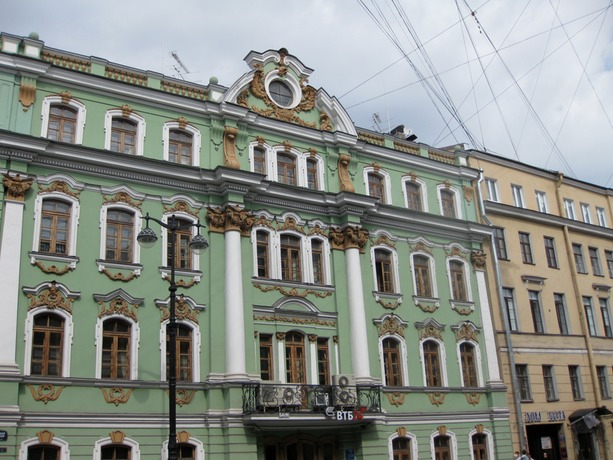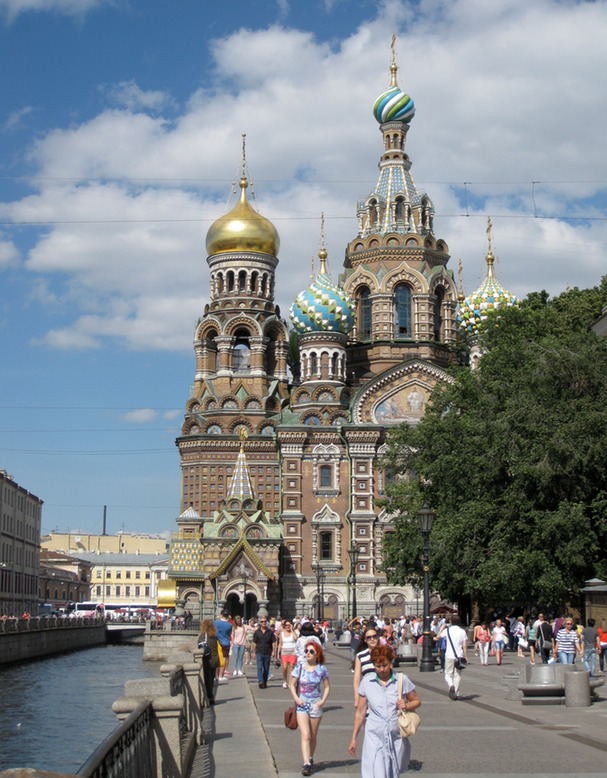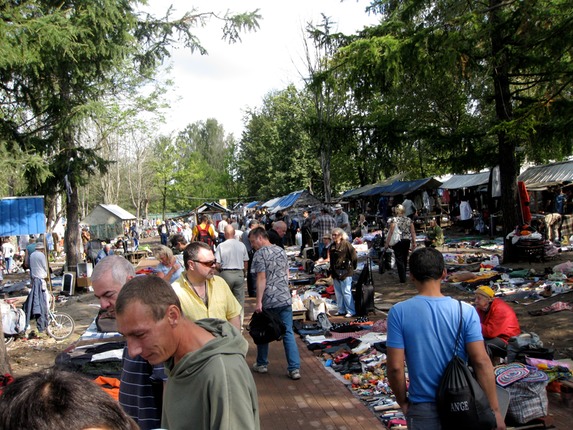This post has virtually nothing to do with camping in Europe. It is, rather, a brief description of our brief trip to St Petersburg, Russia.
Leaving Rover and the computer behind in the campground in Helsinki, we took an overnight ferry to St Petersburg. Before leaving the U.S., we had purchased a tour that allows entry into Russia without a visa for a 3-day stay with a firm exit date. It didn’t offer a way through customs, though, so after an interminable wait in that line, we were met by our young guide, Anna, and a driver and given a three-hour car tour of the city. It got us oriented, and we also received good advice about how to get around in the city. So after Anna dropped us off at the hotel in the early afternoon, we immediately headed for the ATM machine in the lobby, took out 1000 Russian rubles . . . and when we got to our room, we figured out we had just gotten the grand sum of $30. So on our way out, we got another 6000 rubles and left for the subway and the central city.
St. Petersburg is remarkably clean--even the heavily used subway, which had the longest escalators we have ever seen: fully a 2-½ minute trip from top to bottom. Many of the buildings are beautifully decorated, and the bright colors of their facades surprised us. But up close, most look to be in need of plaster repair and a fresh coat of paint. Every one has several large downspouts painted to match the building. Susan finally stopped and measured one: 8-½ inches diameter.

The main shopping street, Nevsky Prospect, is 8 lanes wide with few opportunities to cross, and is fronted by opulent buildings. Once we left Nevsky Prospect, though, we often could hardly tell whether we were passing by shops or not: there were few big display windows, lots of closed doors, and no markings to distinguish them from private entrances. Purely through stubbornness, we did find a theatre museum--it started on the third floor of the building--with four old ladies who made sure that we saw the whole thing . . . leading us from room to room, turning lights on and off as we entered and left, and seeing to it that we operated the wind and rain and thunder machines. The many scene design models ranged from antiquity to the high point of Russian theatre in the 1920s. But nothing was translated from Russian. In fact, outside of the hotel, we found very few clerks or wait staff who spoke any English.
We also visited three Orthodox churches: one where all the Tzars are buried, another with mosaics that rival Ravenna, Italy, a third filled with icons . . . and all of them over the top with gold leaf.

The Church of the Savior on Spilled Blood (!) marks the site of Tzar Alexander II's assassination.
To bring us back to earth, that evening we ate really bad fish and chips at the hotel and watched the Olympics.
The next morning Anna and a different driver took us on a tour of the Hermitage. What used to be an opulent winter palace for the Tzars is now a (still opulent) art museum.

Anna knew her way around, knew--and loved--Russian history, and knew what we wanted to see. Because we’d bought tickets ahead of time, we could avoid standing in line, and we skipped whole floors and wings of things we weren’t interested in (“Do you want to stay here after our time together is over?” she asked. “How much haven’t we seen?” we replied. “About 99%,” she said, smirking just a bit).
The Hermitage is an impressive place, but after four hours on our feet--accompanied by considerable Marxist aesthetics from Anna--we were ready for lunch. Anna recommended a restaurant we never would have discovered on our own: once again, there was nothing outside or on the door to indicate to an American that it was a restaurant, but it proved to be popular place with the locals: meat pies, fish pies, vegetable pies, and of course, dessert fruit pies. We had a delicious lunch for $17.75, including dessert and coffee.
And then we were on our own. Anna had assured us that the pickpocket and thug stories we’d read about were exaggerations, but we remained careful and alert anyway, and came away without incident. Later that afternoon, we took a boat tour in English that she had suggested. St. Petersburg is built on islands, in the midst of one major river and many small canals. The sky darkened as we waited for the boat, and within minutes of boarding a downpour drove us all inside. It rained off and on for the whole hour of the tour. Once again we had barely avoided getting soaked.
On Sunday morning we got out of the historical city center and went to a huge market in an older part of town. It went on for blocks and blocks: about a quarter of it in newer sheds, selling new goods, and the rest on tables and plastic sheets spread on the ground. Susan bought a child’s plastic sewing machine and considered it a find at $3.

We then walked and walked, unsuccessfully seeking two other museums/shops the Lonely Planet guide had mentioned, and finally returned to the hotel to get our luggage and be picked up by a third driver, who took us to the ferry.
Both overnight ferry crossings were smooth. It takes an hour just to get out of the huge harbor at St Petersburg and into open water. A large part of the ship is devoted to partying, with bars and casino and duty-free shopping staying open all night. We had dinner and fell exhausted into bed.
We arrived back in Helsinki at 8 a.m., and after another long wait through customs got back to Rover in the campground by 10. She was waiting just as we had left her: refrigerator running, and all the appropriate monitors glowing green. Best of all, Susan’s stomach has stopped complaining every times she feeds it. It feels good to be “home” again.
